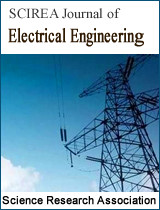Comparison between IOT protocols: ZigBee and WiFi using the OPNET simulator
DOI: 214 Downloads 14105 Views
Author(s)
Abstract
The Internet of things is perceived today as a key opportunity for commercial development in different sectors of activity that can be deployed in the local level as in the case of smart homes, at the regional level as in the case of health, or at the national level in the energy management sector. The IOT connectivity services are different depending on the use case, we find in this context a large number of constantly evolving protocols at the perception layer in the architecture of IOT networks, we distinguish in this article two of these protocols standardized by IEEE which are ZigBee and WiFi.
Keywords
Internet of Things, IOT architecture, ZigBee, WiFi, WSN
Cite this paper
Hamza Zemrane, Youssef Baddi, Abderrahim Hasbi,
Comparison between IOT protocols: ZigBee and WiFi using the OPNET simulator
, SCIREA Journal of Electrical Engineering.
Volume 4, Issue 4, August 2019 | PP. 73-90.
References
| [ 1 ] | Ferran Adelantado, Xavier Vilajosana, Pere Tuset-Peiro, Borja Martinez, Joan Melia-Segui, and Thomas Watteyne. 2017. Understanding the limits of LoRaWAN. IEEE Communications magazine 55, 9 (2017), 34–40. |
| [ 2 ] | Bharathan Balaji, Jian Xu, Anthony Nwokafor, Rajesh Gupta, and Yuvraj Agarwal. 2013. Sentinel: occupancy based HVAC actuation using existing WiFi infrastruc-ture within commercial buildings. In Proceedings of the 11th ACM Conference on Embedded Networked Sensor Systems. ACM, 17. |
| [ 3 ] | Min Chen, Yixue Hao, Yong Li, Chin-Feng Lai, and Di Wu. 2015. On the com-putation offloading at ad hoc cloudlet: architecture and service modes. IEEE Communications Magazine 53, 6 (2015), 18–24. |
| [ 4 ] | Long Cheng, Jianwei Niu, Chengwen Luo, Lei Shu, Linghe Kong, Zhiwei Zhao, and Yu Gu. 2018. Towards minimum-delay and energy-efficient flooding in low-duty-cycle wireless sensor networks. Computer Networks 134 (2018), 66–77. |
| [ 5 ] | Klaus Finkenzeller. 2010. RFID handbook: fundamentals and applications in con-tactless smart cards, radio frequency identification and near-field communication. John Wiley & Sons. |
| [ 6 ] | Behrang Fouladi and Sahand Ghanoun. 2013. Security evaluation of the Z-Wave wireless protocol. Black hat USA 24 (2013), 1–2. |
| [ 7 ] | Sterling Hughes, Jana Van Greunen, Raj Vaswani, et al. 2013. Creation and use of unique hopping sequences in a frequency-hopping spread spectrum (FHSS) wireless communications network. US Patent 8,442,092. |
| [ 8 ] | Manijeh Keshtgari and Amene Deljoo. 2011. A wireless sensor network solution for precision agriculture based on zigbee technology. (2011). |
| [ 9 ] | Mads Lauridsen, Benny Vejlgaard, István Z Kovács, Huan Nguyen, and Preben Mogensen. 2017. Interference measurements in the European 868 MHz ISM band with focus on LoRa and SigFox. In Wireless Communications and Networking Conference (WCNC), 2017 IEEE. IEEE, 1–6. |
| [ 10 ] | Yao Liu, Peng Ning, Huaiyu Dai, and An Liu. 2010. Randomized differential DSSS: Jamming-resistant wireless broadcast communication. In INFOCOM, 2010 Proceedings IEEE. IEEE, 1–9. |
| [ 11 ] | Mike Ryan et al. 2013. Bluetooth: With Low Energy Comes Low Security. WOOT 13 (2013), 4–4. |
| [ 12 ] | Su-Khiong Yong, Pengfei Xia, and Alberto Valdes-Garcia. 2011. 60GHz Technology for Gbps WLAN and WPAN: from Theory to Practice. John Wiley & Sons. |

